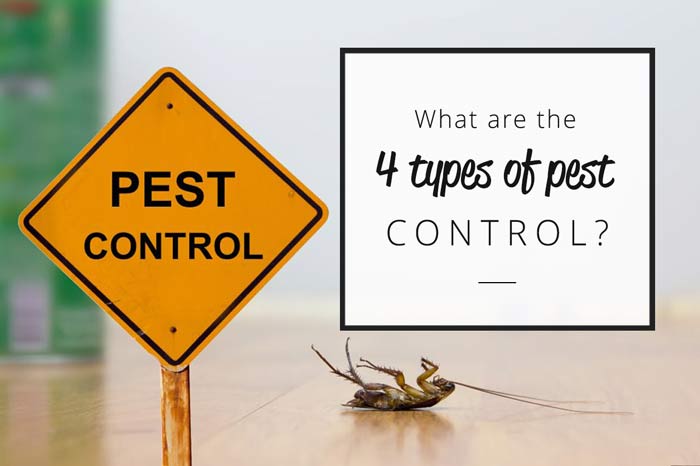The Greatest Guide To Pest Control
The Greatest Guide To Pest Control
Blog Article
The Definitive Guide for Pest Control
Table of ContentsPest Control - TruthsExamine This Report on Pest ControlGetting My Pest Control To WorkFascination About Pest ControlThe 6-Minute Rule for Pest Control
Limitations of Chemical Monitoring Be able to assess parasite problems, figure out if monitoring is necessary, and make appropriate recommendations making use of IPM methods. Be familiar with different approaches of bug administration - their advantages and constraints.This phase talks about (IPM), an approach that utilizes understanding about insects and their, practices, nonchemical approaches, and pesticides to manage parasite troubles. Added info regarding IPM for particular plants is included in phases that focus on those plants. Nonchemical pest control actions are worried in phase 17, "Organic Horticulture." Handling birds and animals is covered in phase 20, "Wild animals." Handling in the lawn and garden is covered in phase 6, "Weeds." Insects in a yard or landscape may consist of bugs and termites, weeds,, mammals, and birds.
Lots of people rush to pull, hoe, or spray every weed they see. Insects and weeds, nonetheless, play a function in the. After planting a yard or establishing a lawn, the all-natural process of plant succession begins to improve and nonnative plants. A weed growing in a grass stands for the initial stage in a sequence of occasions that, if allowed to continue, can ultimately cause a woodland.
What we call "bugs" are component of a natural system at job. Only humans think about specific varieties pests when they take place where they are not wanted.
Pest Control Fundamentals Explained
Insects at risk to a chemical were rapidly killed, leaving immune ones to breed and increase. It became clear that pesticides alone would not fix all pest troubles.
An IPM plan enables some degree of pests in the atmosphere. Pests are much less most likely to endure a program that makes use of various methods of minimizing their populations. Integrated bug monitoring was initial recommended by entomologists since bugs were the very first group of insects to verify difficult to handle with chemicals alone.
parasite and host accurately. and think about financial or visual injury. A threshold is the point at which action need to be taken. a treatment technique making use of mechanical, social, biological, or chemical controls, or a combination of these techniques. success of treatments. IPM has prolonged past pests to administration of all pest populations: weeds, condition organisms, and animals.
Some Of Pest Control
Administration rather than obliteration of insects is the goal. An IPM plan begins with a careful examination of each bug infestation.
Clover growing in a lawn may be considered as an undesirable weed, yet as a legume it is manufacturing nitrogen for the dirt and the blossoms are supplying nectar to honey my latest blog post and other. Tolerance for some weeds may become part of an IPM plan. might be eating the fallen leaves of a plant, yet when they are identified Pest Control as the larvae of Eastern tiger swallowtail butterflies, their damage might be endured so we can appreciate the lovely butterfly.

The 2nd most crucial tool in insect administration is very early intervention. Responding to issues quickly, before they have time to multiply, needs a less dramatic intervention.
The Only Guide for Pest Control
Lots of safe, sensible, nonchemical methods of plant security and insect monitoring may lower or eliminate the requirement to spray. Various other methods are most valuable when made use of with pesticides. To implement administration techniques appropriately and to minimize losses, garden enthusiasts should understand the kinds of insects that attack plants and recognize pest biology.

Performing a dirt test and applying only the suggested quantity of plant food and lime takes full advantage of the benefit to the plant while decreasing troubles connected to too much usage of plant food - Pest Control. Treatment the dirt with numerous inches of compost safeguards the plant in numerous means: lowering dirt water loss to dissipation, minimizing weed competitors, offering nutrients, and producing a suitable setting for earthworms and microorganisms that keep the dirt loose for origins and damage down natural product to launch nutrients
If mulch touches the trunk, it can produce a way for voles, bacteria, and fungi to strike the plant. Do not use manure or garden compost that has not completely decomposed as a leading clothing since it can encourage unwanted pests. Research study suggests that farming is detrimental to dirt structure.
The Single Strategy To Use For Pest Control
If tilling is deemed essential, consider doing it in the fall when the life cycles of numerous bugs brings them near the surface. At the surface, parasites come to be exposed to the weather as well as birds and various other all-natural adversaries.
Report this page